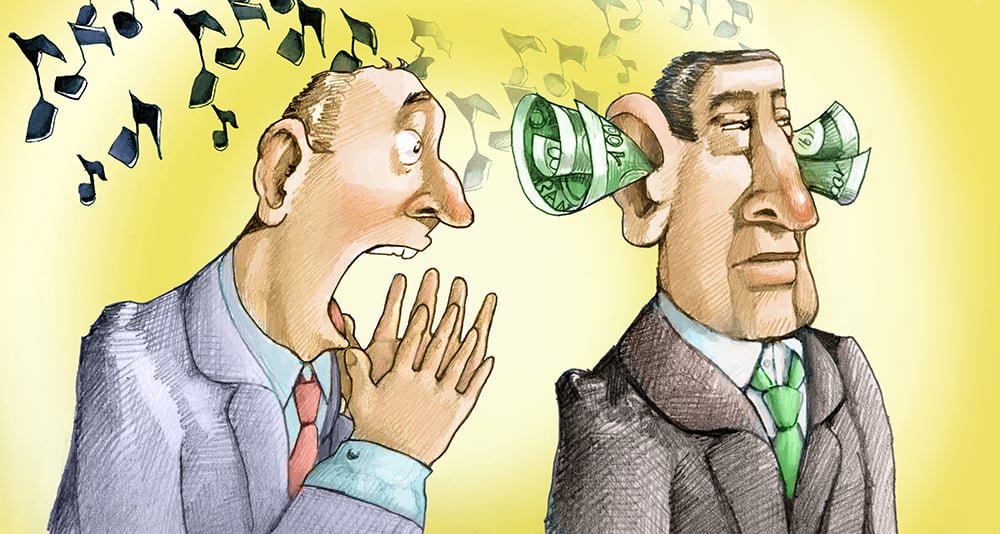CleanAIRE NC Is Holding Their Breath
Charlotte-based clean air advocates wait and wonder: Will the new administration undo two decades of progress?

In mid-March, Lee Zeldin, the new administrator of the U.S. Environmental Protection Agency, announced that the EPA would “undertake 31 historic actions in the greatest and most consequential day of deregulation in U.S. history.” Among them: “reconsideration” of federal regulations that govern coal-fired power plants; the oil and gas industry; wastewater; greenhouse gas and other emissions; and the amount of particulate matter—basically, soot—that manufacturers can legally release into the air. These actions, he wrote, would “Power the Great American Comeback.” (The official release included the capitalizations.) Three days later, Zeldin posted to X: “President Trump often speaks about his strong support for clean, beautiful coal.”
Less than a week later, three staff members of CleanAIRE NC, a Charlotte-based nonprofit that monitors air quality and advocates for communities throughout North Carolina, take their seats at a coworking space’s conference room table in the Belmont neighborhood. I’ve asked them about CleanAIRE’s history and purpose—a small group of Charlotte residents founded it as Carolinas Clean Air Coalition in 2002; it was later renamed Clean Air Carolina, then its current name—and whether they can pinpoint how the Trump administration’s actions will affect what we breathe.
Executive Director Jeff Robbins, Advocacy Manager Brittany Griffin, and Community Science Manager Daisha Wall say they aren’t sure yet about the specific risks or ramifications. But they agree that the EPA’s and White House’s public stances on power plants and vehicle emissions, the two largest sources of air pollution, are “troublesome.”
I ask a more personal question, one I hadn’t planned to ask: How are you guys doing personally? In other words: What’s it like to devote your livelihood to trying to keep the air clean, then check X and see the new EPA administrator, on the president’s behalf, rhapsodize about “clean, beautiful coal”?
The three chuckle grimly. “Therapy is important,” says Wall, at 28 the youngest of the three. Robbins is older, having left a nearly three-decade career with companies like Motorola and FedEx because he wanted more meaningful work. “I left the corporate world to come here, so I’m motivated. But there’s days when you feel like, ‘I want to crawl in the corner and into a ball and just wail,’” he says. “But you’ve got to keep going.”
The progress of more than 20 years sharpens the edge of their dismay and worry. Charlotte, one of the nation’s worst cities for air quality a generation ago, has gradually made its air cleaner and lowered the risk of respiratory diseases, especially among low-income, minority residents—even as the city’s population has grown.
In 2001, the American Lung Association ranked Charlotte among the 10 worst metro areas in the country for ground-level ozone, a pollutant and the main component in smog. Last year, for the first time in the 25-year history of the ALA’s annual State of the Air report, Charlotte earned a passing grade for ground-level ozone.
Pollution from soot remains high in Charlotte but has improved, according to both the ALA and Mecklenburg County. The county’s Air Quality Program tracked nearly 60 poor air quality days in one year as recently as 2007. That number has reached 10 only once in any year since 2012. Last year, it was four. (CleanAIRE does its own monitoring, and its data largely matches the county’s.)
The improvement, Robbins says, comes from a host of efforts to reduce air pollution. Among them: the 2002 passage of the state’s Clean Smokestacks Act, which reduced emissions from power plants statewide. Another, this one specific to Charlotte: the gradual replacement of gasoline-fueled city and school buses with electric ones. He says city and county officials are still committed to their formal pledges of the past decade to reduce carbon emissions. No one knows yet how much difference those efforts can make under a federal administration that guts environmental protections. But realistically and generally, Robbins says, “things (will) get worse.”
On a national scale, the Trump administration has begun to dismantle Biden-era efforts to boost clean energy. Tax credits for wind, solar, and similar projects were key pieces of the 2022 Inflation Reduction Act, which the Biden administration billed as “the single largest investment in climate and energy in American history.” It aimed for a 40% reduction in nationwide carbon emissions by 2030.
The new administration, though, has fast-tracked fossil fuel projects and withheld funding and approval for clean energy. That’s drawn objections even from some Republican members of Congress who represent districts where federal clean energy funds have created manufacturing jobs. In February, Trump announced a new “National Energy Dominance Council,” an advisory body for national policy to use “our amazing national assets, including our crude oil, natural gas, lease condensates, natural gas liquids, refined petroleum products, uranium, coal, biofuels, geothermal heat, the kinetic movement of flowing water, and critical minerals” to improve the economy. Wind, solar, and other clean energy sources are not mentioned.
“We’re not going to see the impact of (clean energy investment)—what could have been,” Wall says. “I worry about how this is going to set back the movement, because we have made such great progress over the past five years. They’re just trying to erase it.”
The government’s reversal on energy policy is especially painful for Wall, who joined CleanAIRE four years ago specifically to work on improving air quality in poor, historically Black neighborhoods like Historic West End. CleanAIRE helps community groups and individuals who file air quality complaints with the county, state, and federal governments. The organization collects data that can support residents’ claims—a crucial component, which the Biden administration supported, of what advocates call “environmental justice.”
It’s especially important in low-income neighborhoods, Wall says. Decades of redlining, urban renewal, and highway construction have forced low-income Black residents into homes near interstates, highways, and industrial plants. That makes them especially vulnerable to particle pollution, and Wall tries to educate residents and local officials about the link between systemic racial discrimination and dirty air.
In 2016, CleanAIRE and westside community leaders began to monitor air quality in Historic West End with 10 to 15 sensors—each about the size of a softball—that register levels of particle pollution. A year’s worth of results demonstrated that Historic West End generally suffers from poorer air quality than whiter, more affluent neighborhoods. The project led to a community “Green District” plan to emphasize green infrastructure, plant trees, and install electric vehicle charging stations. In 2018, the EPA installed its own far more sensitive monitor near Friendship Missionary Baptist Church on Beatties Ford Road, just off I-77.
“Education is a big piece that we don’t focus on enough,” says Wall, who also serves on the Governor’s Environmental Justice Advisory Council, which former Governor Roy Cooper established in 2023. “But once you educate a community, and you work hand-in-hand and collaborate with a community on air quality issues, you’d be amazed at the outcomes you can get.”
The efforts in Historic West End continue, but the Trump administration has made no secret of its attitude toward such projects. Among Lee Zeldin’s “31 historic actions” in March: the termination of the EPA’s Environmental Justice and DEI arms. Decisions at the highest levels of government, Robbins says, will land close to the ground.
“If they cut through the systems that are designed to help people who are of low income, the system is going to be overrun with more cases of health issues,” Robbins says. “More kids with asthma—we know the correlation between emissions and asthma is strong. The ability to get seen by a doctor is already becoming more challenging. We’re looking at a catastrophic event, just financially, from the health impacts based on us turning back the clock on the environment.”






